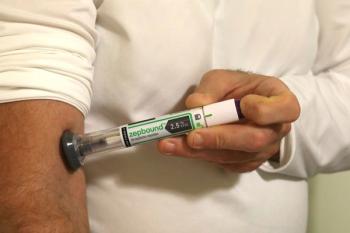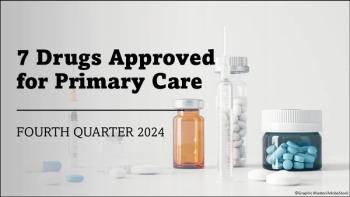
Unmasking Sleep Apnea with Polysomnography
Results of an annual physical examination of a 54-year-old man have led you to suspect he may have-or be at high risk for-sleep apnea syndrome. His BMI is 37 and his blood pressure is 126/82 mm Hg. He has hypertension and hyperlipidemia. He reports restful sleep and no daytime sleepiness.
The clinical characteristics that raise your suspicion are: BMI greater than 35, a history of hypertension, and male gender. These are 3 of 8 risk factors for sleep apnea identified by the STOP-BANG screening tool. The presence of 3 or more factors is sufficient to confer a high risk of the disorder.
You refer him for polysomnography and receive the following test results:
- Apnea-hypopnea index of 22
- 20 obstructive apneas
- 10 mixed apneas
- 22 central apneas
- 80 hypopneas
- Lowest oxygen saturation 82%
- 12 awakenings and 32 arousals
Based on these data, the most appropriate diagnosis is:
A. Obesity hypoventilation syndrome
B. Obstructive sleep apnea
C. Central sleep apnea
D. Insomnia
E. None of the above
Answer: B. Obstructive sleep apnea
Discussion
According to the International Classification of Sleep Disorders, third edition, the diagnosis of obstructive sleep apnea is established as follows (paraphrased):
A and B:
A. Complaints of sleepiness, nonrestorative sleep, fatigue, or insomnia; or awakenings with breath holding, gasping, or choking; or observed habitual snoring, breathing interruptions; history of hypertension, a mood disorder, cognitive dysfunction, coronary artery disease, stroke, congestive heart failure, atrial fibrillation, or type 2 diabetes mellitus
AND
B. Polysomnography demonstrates 5 or more predominantly obstructive respiratory events (obstructive and mixed apneas, hypopneas, or respiratory event-related arousals [RERAs]) per hour of sleep
OR C:
C. Fifteen or more predominantly obstructive respiratory events (apneas, hypopneas, or RERAs) per hour of sleep.
OSA is characterized by repetitive episodes of complete (apnea) or partial (hypopnea) upper airway obstruction occurring during sleep. These events often result in reductions in blood oxygen saturation and are usually terminated by brief arousals from sleep. Since the predominant types of obstruction in this patient are obstructive in nature (obstructive apneas, mixed apneas, and hypopneas comprise the majority of events), the proper diagnosis is OSA.
Arousals and awakenings are common in OSA patients, and are usually related to the severity of the condition; a diagnosis of insomnia is not appropriate unless the patient complains of difficulty in sleep initiation or maintenance, which this patient does not; in addition, a diagnosis of insomnia is made on the basis of subjective complaint, not polysomnography.
Newsletter
Enhance your clinical practice with the Patient Care newsletter, offering the latest evidence-based guidelines, diagnostic insights, and treatment strategies for primary care physicians.

















































































































































































































































































